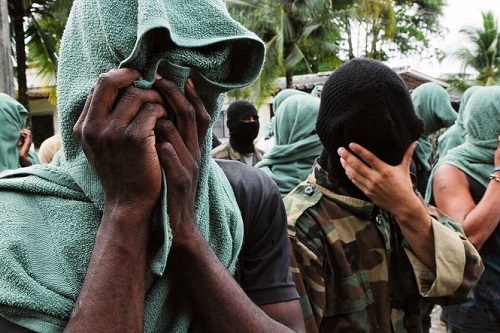AP photo
By
Ricardo Swire
A few years ago “Plan Colombia” was heralded as that country’s War on Drugs’ turning point. The massive 2013 law enforcement offensive was actually a US/Colombia foreign affairs mirage. While it is true powerful Mexican cartels have monopolized the global cocaine wholesale trade, new generation Colombia trafficking mafias have been extremely buoyant in the trade. In the recent past Colombia recorded top coca production levels, international markets exploited by exporters. 2016’s 146,000 hectares of nationally cultivated coca were fifty-two percent more than 2015’s 96,000 hectares.
In 2017 Colombia’s departments of Meta and Guaviare were collectively home to more than 12,000 hectares of coca, an eighteen percent increase compared to 2016. Reworked Caribbean intelligence reports confirmed Colombian heavyweight traffickers ceded their American cocaine market shares to Mexican rivals in Gulf, Juarez, Tijuana and Sinaloa Cartels as part of savvy business deals. At the time American wholesale cocaine prices ranged between US$20,000 and US$25,000 per kilo but interdiction, seizure of assets, extradition risks and payouts were too high.
The Colombian trafficking gurus gave up “bad corporate investments opting to concentrate on Europe’s US$35,000, China’s US$50,000 and Australia US$100,000 per kilo markets with lower risks. Increased cocaine supply demand, together with US dollar value against the Colombian peso, have reduced domestic prices and increased profits for transnational organized crime entities. Today fourth generation Colombian drug lords are armed with encrypted mobile phones, diverse portfolios of legally established businesses and intimate knowledge of world finance.
Colombian and Mexican traffickers both recognize anonymity is the ultimate protection from rivals and law enforcement. Caribbean counter-narcotics analysis highlighted more than 57,000 hectares of drug-producing crop cultivated along the Pacific seaboard trafficking channel, in Colombia’s most isolated districts. A recorded forty-two percent increase between 2015 and 2016. Multi-billion dollar trafficking businesses operate from obscure, luxurious locations within Colombia’s industrialized drugs market.
One underworld mantra says “plata” is infinitely more effective than “plomo” or “silver” is more meaningful than “lead” from a bullet. Caribbean national intelligence data maps Colombian narcos’ trafficking routes through Brazil, Ecuador and Venezuela. Ecuador’s border with Colombia’s neighbouring department of Putumayo, where Plan Colombia was initiated, registered twenty percent more coca cultivation. Domestic counter-narcotics enforcers, continuing Plan Colombia’s agenda, now face the vicious BACRIM crime fraternity.
Between 2014 and 2015 BACRIM’s network grew significantly and incorporated smaller smuggling groups such as Las Aguilas Negras or Black Eagles, a subversive paramilitary group born during the government’s 2004 to 2006 demobilisation failure. Today BACRIM manages routine operations in more than one third of Colombia’s 1,102 municipalities. Los Urabenos Cartel is another BACRIM partner. Los Urabenos’ approximately 2,600 members operate in 304 municipalities. BACRIM enjoys exports from Colombia’s Pacific and Atlantic coastal outlets as such locations facilitate unrestricted trafficking.
Ricardo Swire
Ricardo Swire is the Principal Consultant at R-L-H Security Consultants & Business Support Services and writes on a number of important issues.



No Comments Yet!
You can be first to comment this post!